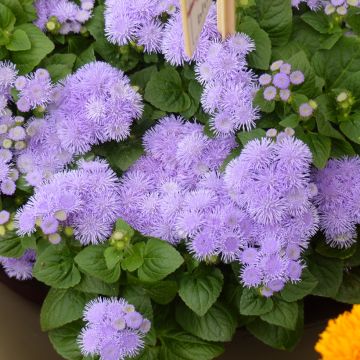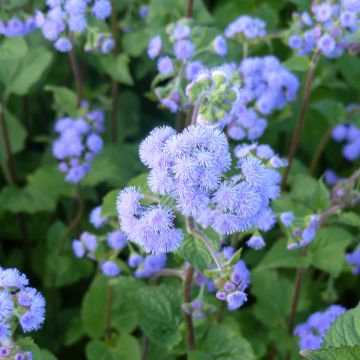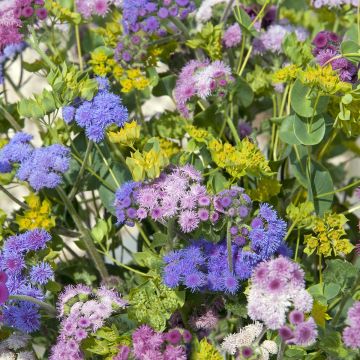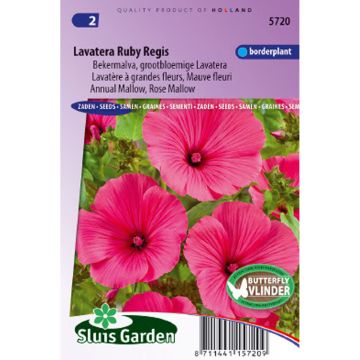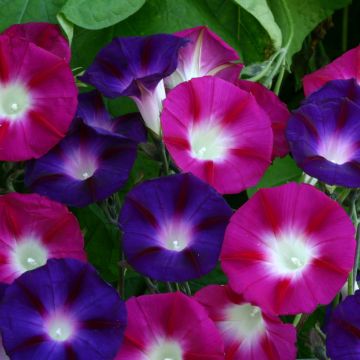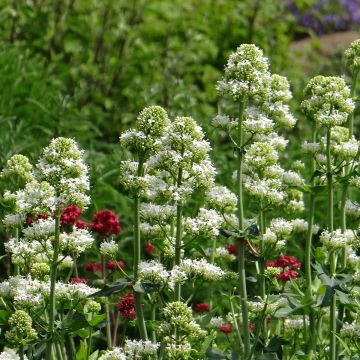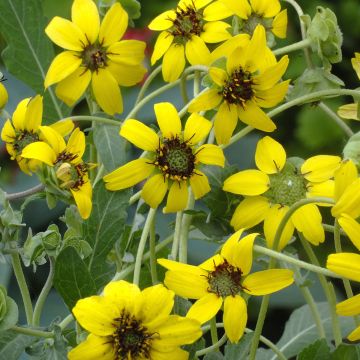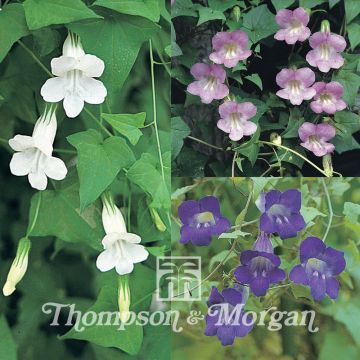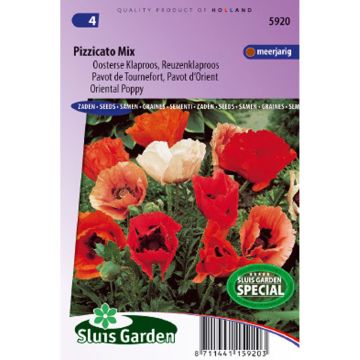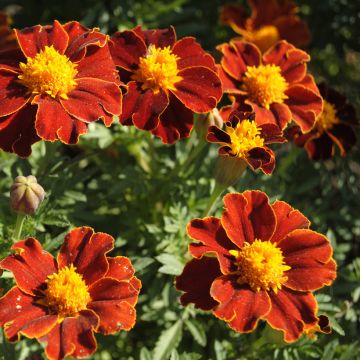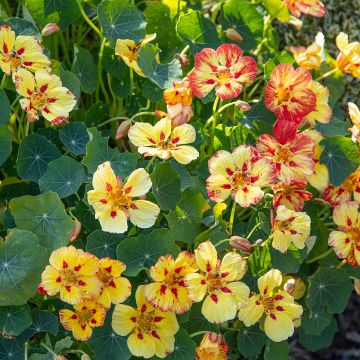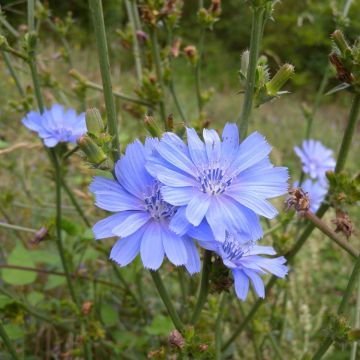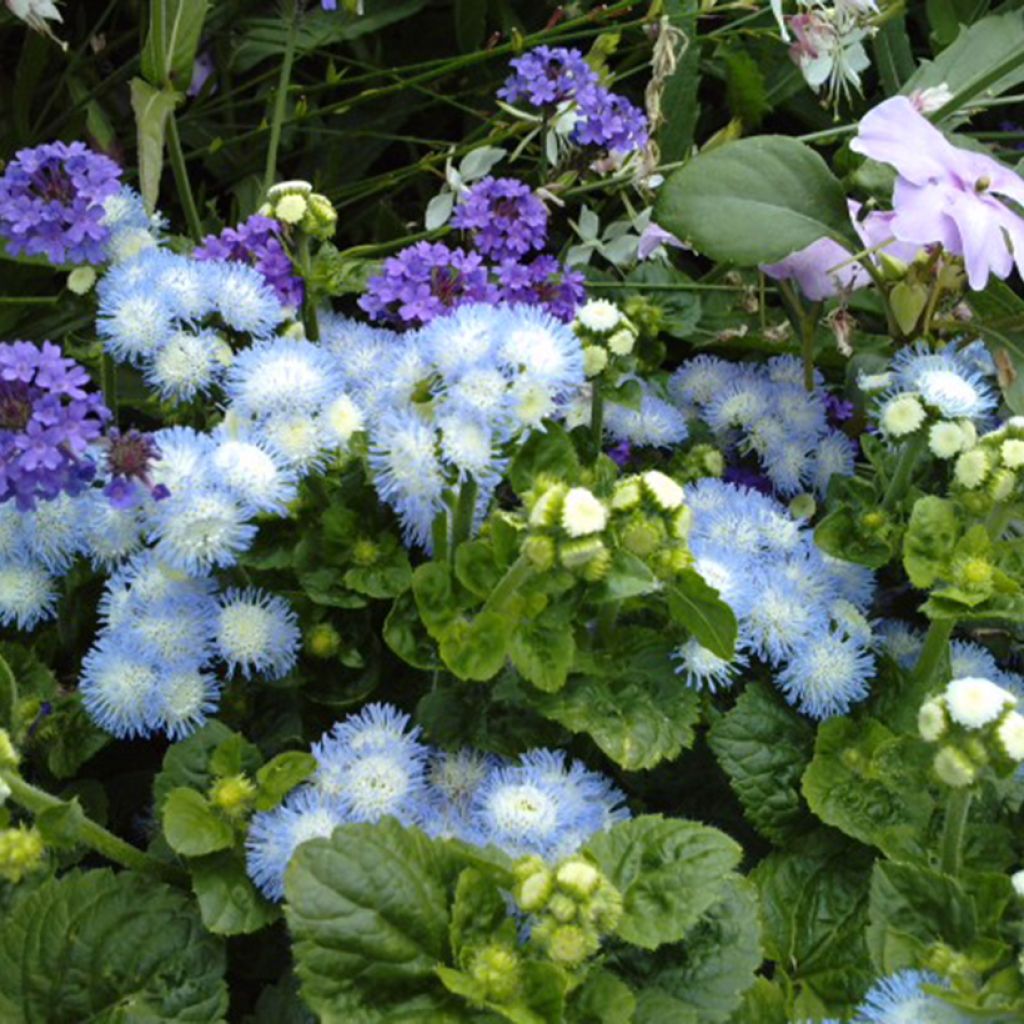

Ageratum houstonianum Bavaria seeds - Mexican paintbrush
Ageratum houstonianum Bavaria seeds - Mexican paintbrush
Ageratum houstonianum Bavaria
Agérate du Mexique Bavaria, Célestine
This item cannot be shipped to the selected country
Delivery charge from €5.90
More information
Schedule delivery date,
and select date in basket
This plant carries a 6 months recovery warranty
More information
We guarantee the quality of our plants for a full growing cycle, and will replace at our expense any plant that fails to recover under normal climatic and planting conditions.
From €5.90 for pickup delivery and €6.90 for home delivery
Express home delivery from €8.90.
Does this plant fit my garden?
Set up your Plantfit profile →
Description
The 'Bavaria' Dwarf Ageratum or Mexican ageratum, is a frost-tender perennial plant grown as an annual in our climate, with original flowers. It forms a compact tuft of dark green foliage with bluish highlights, with short stems topped with fluffy, feathery inflorescences, which, in this variety, are blue-mauve with a white centre. With a bushy habit, this ageratum is delightful with its long flowering period and easy cultivation. It is ideal for structuring borders, pots, and the foreground of beds, in the sun, in moist soil.
The 'Bavaria' Ageratum is a variety derived from Ageratum houstonianum, a perennial plant grown as an annual from the asteraceae family, originating from Central America and the Caribbean. It forms rounded and bushy masses of 30 cm in height with an equivalent width. Highly branched and covered with hairs, its numerous stems stand upright while gracefully spreading out. The dentate and ovate leaves are also hairy. They are sometimes heart-shaped at the base, with a rather dark bluish-green hue. From April until early autumn, the flowers bloom continuously, if faded flowers are removed regularly. The inflorescences are lavender-blue capitula, soft and luminous, with a white centre, clustered in pompon-like clusters, almost entirely concealing the foliage.
Mexican ageratums are frequently used in urban landscaping due to their abundant flowering and vibrant colour palette. They blend perfectly with various low-growing plants such as marigolds, calendulas, and sages to enhance flowerbeds. For a soft visual effect, combine ageratums with begonias and pink impatiens or fragrant sweet alyssums in the foreground of compositions. The 'Bavaria' variety is ideal for creating attractive pots with miniature fuchsias, such as 'Blue Angel' on terraces or balconies and for composing beautiful bouquets indoors.
The Mexican Ageratum promotes insect pollination. Bees, butterflies, and others.
Report an error about the product description
Flowering
Foliage
Plant habit
Botanical data
Ageratum
houstonianum
Bavaria
Asteraceae
Agérate du Mexique Bavaria, Célestine
Cultivar or hybrid
Other Ageratum seeds
Planting and care
SOWING: Sow Ageratum Bavaria on the surface of moist and well-drained seeds compost and cover the seeds with a thin layer of vermiculite. Place the sowing in a greenhouse or keep it in a polythene bag at around 20-30°C until germination, which takes from 7 to 21 days. Expose to light to promote germination.
CULTIVATION: When the young plants are sufficiently developed to be handled, transplant them in clumps into trays or 8 cm pots. Acclimatise them to cooler conditions for a few days before planting them out when all risk of frost has passed. Space them 30 cm apart.
Sowing period
Intended location
This item has not been reviewed yet - be the first to leave a review about it.
Flower seeds
Haven't found what you were looking for?
Hardiness is the lowest winter temperature a plant can endure without suffering serious damage or even dying. However, hardiness is affected by location (a sheltered area, such as a patio), protection (winter cover) and soil type (hardiness is improved by well-drained soil).

Photo Sharing Terms & Conditions
In order to encourage gardeners to interact and share their experiences, Promesse de fleurs offers various media enabling content to be uploaded onto its Site - in particular via the ‘Photo sharing’ module.
The User agrees to refrain from:
- Posting any content that is illegal, prejudicial, insulting, racist, inciteful to hatred, revisionist, contrary to public decency, that infringes on privacy or on the privacy rights of third parties, in particular the publicity rights of persons and goods, intellectual property rights, or the right to privacy.
- Submitting content on behalf of a third party;
- Impersonate the identity of a third party and/or publish any personal information about a third party;
In general, the User undertakes to refrain from any unethical behaviour.
All Content (in particular text, comments, files, images, photos, videos, creative works, etc.), which may be subject to property or intellectual property rights, image or other private rights, shall remain the property of the User, subject to the limited rights granted by the terms of the licence granted by Promesse de fleurs as stated below. Users are at liberty to publish or not to publish such Content on the Site, notably via the ‘Photo Sharing’ facility, and accept that this Content shall be made public and freely accessible, notably on the Internet.
Users further acknowledge, undertake to have ,and guarantee that they hold all necessary rights and permissions to publish such material on the Site, in particular with regard to the legislation in force pertaining to any privacy, property, intellectual property, image, or contractual rights, or rights of any other nature. By publishing such Content on the Site, Users acknowledge accepting full liability as publishers of the Content within the meaning of the law, and grant Promesse de fleurs, free of charge, an inclusive, worldwide licence for the said Content for the entire duration of its publication, including all reproduction, representation, up/downloading, displaying, performing, transmission, and storage rights.
Users also grant permission for their name to be linked to the Content and accept that this link may not always be made available.
By engaging in posting material, Users consent to their Content becoming automatically accessible on the Internet, in particular on other sites and/or blogs and/or web pages of the Promesse de fleurs site, including in particular social pages and the Promesse de fleurs catalogue.
Users may secure the removal of entrusted content free of charge by issuing a simple request via our contact form.
The flowering period indicated on our website applies to countries and regions located in USDA zone 8 (France, the United Kingdom, Ireland, the Netherlands, etc.)
It will vary according to where you live:
- In zones 9 to 10 (Italy, Spain, Greece, etc.), flowering will occur about 2 to 4 weeks earlier.
- In zones 6 to 7 (Germany, Poland, Slovenia, and lower mountainous regions), flowering will be delayed by 2 to 3 weeks.
- In zone 5 (Central Europe, Scandinavia), blooming will be delayed by 3 to 5 weeks.
In temperate climates, pruning of spring-flowering shrubs (forsythia, spireas, etc.) should be done just after flowering.
Pruning of summer-flowering shrubs (Indian Lilac, Perovskia, etc.) can be done in winter or spring.
In cold regions as well as with frost-sensitive plants, avoid pruning too early when severe frosts may still occur.
The planting period indicated on our website applies to countries and regions located in USDA zone 8 (France, United Kingdom, Ireland, Netherlands).
It will vary according to where you live:
- In Mediterranean zones (Marseille, Madrid, Milan, etc.), autumn and winter are the best planting periods.
- In continental zones (Strasbourg, Munich, Vienna, etc.), delay planting by 2 to 3 weeks in spring and bring it forward by 2 to 4 weeks in autumn.
- In mountainous regions (the Alps, Pyrenees, Carpathians, etc.), it is best to plant in late spring (May-June) or late summer (August-September).
The harvesting period indicated on our website applies to countries and regions in USDA zone 8 (France, England, Ireland, the Netherlands).
In colder areas (Scandinavia, Poland, Austria...) fruit and vegetable harvests are likely to be delayed by 3-4 weeks.
In warmer areas (Italy, Spain, Greece, etc.), harvesting will probably take place earlier, depending on weather conditions.
The sowing periods indicated on our website apply to countries and regions within USDA Zone 8 (France, UK, Ireland, Netherlands).
In colder areas (Scandinavia, Poland, Austria...), delay any outdoor sowing by 3-4 weeks, or sow under glass.
In warmer climes (Italy, Spain, Greece, etc.), bring outdoor sowing forward by a few weeks.

































